top of page
FLOODED DESERTS
Lecture
Mexico City, Mexico
I am flying now, above a sea of white clouds, down below is America. The captain does not allow me to use my cellular phone, nor am I allowed to change my seat. Three weeks ago he would have allowed me to do so, not today – not after the flood of the towers…
Flood
We live in a flooded world; we are flooded with images and we call it media. Rush hour is the term we use for our flooded highways and a crash describes the flooded computers that need to be restarted. The Dow and NASDAQ indicate our flooded wealth, and at times inflation is the flooded loss of value of our money. We call immigration a human flood of people, and workaholics are people flooded with responsibility. We have the Internet that floods us with information. Urbanization is the word we have invented for the condition of a flooded environment of people trying to live together in a large city. We call the flood of violence, war and give the name AIDS to a flood of viruses that are a result of the flood of unsafe sex. And yes, we have a mind, the size of our fist, that seems to have an infinite capacity for flooding, although it too needs few hours of sleep every day in order for it to be ready for the next flood…
Flying
From 35,000 above, the ground looks flat. The tall mountains in the horizon feel like part of a remote desert. From the window of the plane, the plane of the Earth loses its variety of colors and becomes dark gray. It reminds me of the colors of a dry crater I saw years ago. The human establishment below me, probably a city of 50,000 people, looks like a deserted and dusty merchant town waiting for the next convoy. Some water bodies, which I assume are lakes look like small silver petals, the agriculture plains, like sand dunes. At a certain moment, I see a flooded plane. I have no concept of scale; I cannot determine the size of this plane. Many islands of different sizes appear in the water. The water is surrounded by a crooked and nervous white edge. The sunlight seems to enjoy the opportunity to finally discover a reflecting plane to play with. The nature of the water line tells me that this body of water is not man-made. The water follows the contour of the land and is in constant flux. What I see from the plane on my flight to Mexico City looks like a flooded desert.
Desert
I grew up in the desert. For years I would pass by the “liman” and hardly notice it. These ancient desert structures, take advantage of the phenomenon of flood in the desert in order to collect water and create green lungs along the roads. It is as if someone who knew the desert decided to take advantage of its extreme condition and create the “liman.” The “liman” is a small earth dam constructed next to an intersection of a road and a mostly dry creek. When a flood occurs, the water, unable to penetrate the hard desert earth, creates a torrent in the trail of the creek and is ultimately slowed and captured by the dam. The water than will flood a small area and will remain in that area for couple of days or weeks depending on the climactic conditions. Trees that require a small amount of water are seeded in that enclosure. With this repeating cycle, year after year, the natural floods stimulate the growth of the trees and will create an oasis. I noticed the “Limans” again when I came back to visit home after my studies in New York. I realized that during the summer the “limans” were used by the nomadic people and their herds and also by local people as a resting space. A few of the “limans” even became official rest areas with wooden tables and benches.
Floods
I also remember rainy days in New York City when the water was not able to penetrate the concrete surface of the streets and temporarily flooded the city. Why, I thought, thinking of the “Liman”, can’t we use the same concept in our cities and create environments that will be temporarily flooded every year and the rest of the time will be an integral part of the human activity and the fabric of a place?
Perhaps the most important factor in the making of the flooded desert is the understanding and acceptance that we are surrounded by extreme conditions, whether natural or urban, and that our adaptation or success in improving our lives and environment can be achieved through scale less new scales, of constantly evolving projects that become a recipe for forming, as well as a singular moment in the condition of the whole, and that the inspiration for making resides not within the immediate and obvious but rather is hiding, waiting to be revealed in the most unexpected regions. I have learned that from painting.
Painting
Paul Klee painted the infinite depth of the surface in an attempt to penetrate the depth of the skin. With color, lines, planes, signs and the titles of his paintings, he opens a door for us into the invisible. What Klee is painting is not the actual landscape but the potential of its layers; not the form of the land, but the blueprint for the forming of a moment. Not the form of an image, but the structure of the imagination. Painted here is an understanding and fine tuning of the materials that create and define an environment as well as determining the history of a place. For him the ancient structures in Giza, Egypt carry the same energy and movement as a winter storm, while the formlessness of a dune is as a defined, strong figure as the Pyramids. To our eyes, the desert is not a desert any longer. Rather its surface is but a suggestion and a call to look for the invisible, for the hidden reality buried under the mask of premature perception and artificial knowledge. Klee’s paintings are not to be looked at, not to be heard, but to be seen and to be heard.
Passeo De La Reforma
Tomorrow I am leaving. It’s well past midnight and a friend of mine, an architect, is showing me the city. We are driving around Plaza de la Constitucion. The streets are empty and we are the only car in the boulevard. We are driving slowly so we can see the buildings. Suddenly a police car stops us; the policeman approaches and asks for papers. He is convinced that I am teaching my friend to drive – otherwise why would we be driving so slowly? He hardly believes the explanation and actually follows us to ensure that we drive at the proper speed. I could only imagine the square flooded, flooded with people, with sounds, with smells, with movement… In a way, without even noticing it, the square, the Cathedral, the streets already exist in a condition of temporary flooding. But now under the dark skies the beautiful buildings look ashamed and naked, in their nightmarish sleep, their grandeur long forgotten, their feet unable to hold them straight. The dimensions of the square feel perfect to me, a sense of a place, a period at the heart of a sentence written by the city (I live in Manhattan- a “sentence” without any periods…) and the size of the Cathedral is in complete synchronization with the scale of the square. Still, the building makes me sad; its wrinkles, its poise (or lack of), its overwhelming tiredness and silent bell towers. Endless battles with mother Earth and her agents take their toll on the weary stones. It seems to me that in front of these battlefields of land, man and time, architectural thoughts become mute… perhaps all thoughts become mute as emotions and memories finally find enough space to dance…
On the way to the hotel we drive along Passeo De La Reforma, “Water Island,” the first project I presented yesterday, made the suggestion to flood the monuments along the boulevard into temporary infrastructure for Urban Runoff water. The history of the Aztec city and its relation to water were the inspiration for the proposal. While the ancient city was one of many islands and had been surrounded by water, today’s city is a growing organism of inhabitants surrounding decreasing amounts of water. The close proximity of the location of the ancient aqueduct that brought water to the island city of Tenochtitlan and the location of Passeo De La Reforma, as well as the mutual generating point at Chapultepec Park suggest a reversal in the definition of an island created by and symbolic of the water – population in relation to the growth of the city. A night photograph of the Passeo shows new types of islands. In the image the monuments along Passeo De La Reforma become islands in a flooded sea of traffic. The lake, long gone now, has become a dense urban space, cut only by the wide boulevard. Traffic is seen as streams of light around the dark monuments and the dividing lane. The proposal is to transform the monuments to structures, which will collect the Urban Runoff during the rainy season, filter the water, purify it and direct the water back to the aquifer below. All of this will take place without interfering with the traffic pattern on the street. By doing so the monuments, now symbolic objects of historical significance and a non-participating objects in the life of the city, will become, during the rainy season, a live objects that participate in generating their future, yet still act as a symbols committed to their heritage and past. Paul Valery said once: “the misery of civilization can be seen by contemplating its marvels.” For some, the proposal may humiliate the original program and the symbolism of the city’s pride, yet this idea very clearly suggests a present condition which allows a structure of memory and past to become a generating force of the future, through the understanding that the transition in roles is an outcome of the environmental conditions of the city and the needs of its inhabitants. The main obstacle of creating such a transition, particularly due to the small scale of the intervention, is as always, the mental condition of the collective pride and its openness and wisdom to prioritize, and allow it to use forgiveness as a generating force.
Chalco
To an ordinary westerner like myself, the green and thick water of xxxx do not appear compelling at all, it is very hard for me even to understand how people use this water as a source of life much less as a place for relaxation and fun (I am about to get a great lesson). Steering with great accuracy the flat boat we are sitting in by using his long pole, our young guide reveals for us an intricate and complex set of canals and islands, carefully crafted and well thought out although with the clear absence of a central guiding hand or vision. What seemed to be a neglected swamp is slowly becoming for me a set of well calculated and negotiated set of human agreements and understandings that allow for life to develop. Evidence of intense communication between the land and its inhabitants forms an infrastructure for living, without great vision but through the perspective of everyday life with all of its aspects. At the heart of the system located on a floating island we are introduced to the local museum. A small mud structure, a little vegetable garden, a pool are the few and simple signs that contain and mark the pride of generations. A few archeological findings hang from the straw roof; others are placed on a single wood shelf, the floor is unpaved earth. A drawing and a couple of sentences illustrate the history of the place. A turtle in a small pool is a sole representative of the animal community (accept for birds that stop by for an occasional rest). This place is a humble and honest gesture that respects past generations and fills the new ones with hope, joy and self-esteem. It is a clean, clear and precise demonstration of the power of a community to identify itself and its desire to maintain its integrity; a lesson in the spirit of mankind. The proud guide is careful to explain and show us all the elements of this magical place before taking us back to the shores of the city for lunch. (The power of the museum became even clearer for me when later that afternoon, I was exposed to the unfortunate proposal for the new airport of Mexico City). Like the museum, in the heart of the proposal for “Expendable Waters” in Chalco, is a search for an intervention in a scale, which blurs the line between architecture and social education. Scale, as one discovers, cannot be used just as an architectural tool anymore, but rather is determined by the economic, social and political forces that define the perimeters of space. Space, is no longer conceived as a physical space of inhabitation but as a mental space, which operates and controls the space of inhabitation. Spaces that cease becoming an abstract representation of an ideal concept are, when constructed, metaphorical planes of individuals, which then become an absolute reality.
The proposal, which was developed and detailed in full, was to create a personal household kit for collecting and recycling rain and floodwater. A distribution system promotes educational progress and gave instructions for use in an economic incentive program designed especially for a low-income community. Once ingrained into the mental spaces of the community, the actual kit has the ability to adapt itself to the changing conditions of the neighborhood and the individual house. The system includes expendable gutters for roof runoff, a funnel with a pre-filter for large debris for collecting the street runoff. The system also includes a self-inflating water storage tank and a water filter. All of these elements were packaged as a unit and were distributed, ready to be assembled. The low cost of the kit and the simplicity of the operation
The Little Prince
Architecture is a social art. The act of construction carries with it the responsibility of a humanitarian commitment. The beauty of the social sciences is that their study departs from the individual cell only to question the problems of a community of cells. Art, on the other hand, is beautiful. The beauty of its so-called “uselessness” is that it provokes and ignites the human soul. As a social artist the responsibility of the architect is to ignite the human soul to question the essence of its community of cells, to the point of questioning the cell itself. Today’s technology and progress serves as a double-edged sword to the work of the architect. On the one hand it supplies enormous possibilities, resources and tools that enables him to stretch the limits of the imagination. On the other hand, depending on those tools presents the greatest danger of all — the loss of the same imagination, and the creative ability to join the imagination to the intellect in order to create.As a conductor of the composition of space and life, the role of the architect should be to compose the tones of human responsibility, imaginative design and technical proficiency into a complete symphony. His ability to listen to the invisible music being played by the instruments of the human structure is to be understood in the words of the Little Prince: “The beautiful thing about the desert is that somewhere it hides a well.”
In collaboration with Pratt Institute, School of Architecture.
Aztec Islands and Aqueduct, Passeo de la Reforma – Islands of Light, Flooded Monuments, Independence Monument Flooded, Cuauhtemac Monument Flooded – Paiboon Jirprasertkun
Example of System Configuration on Typical Chalco House, Recycling Unit – Seth Hanselman
Aquapolis Conference was organized by Universidad Nacional Autonoma de Mexico & The Goethe Institute



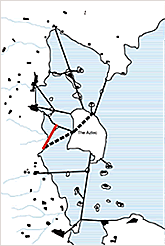
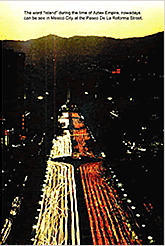
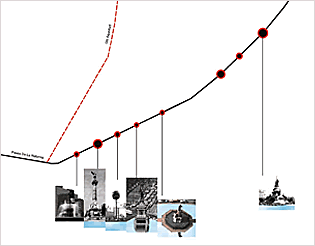
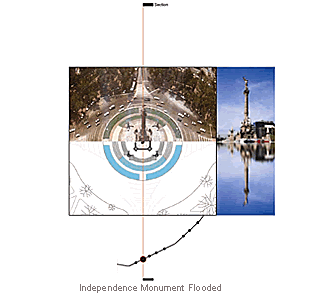
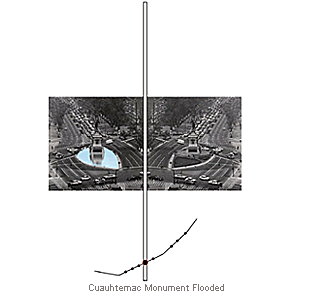
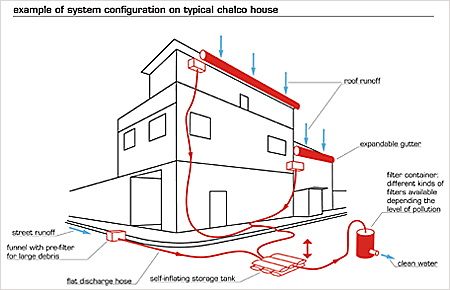
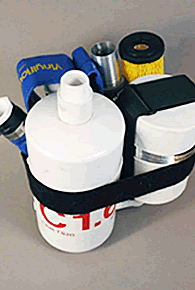
bottom of page